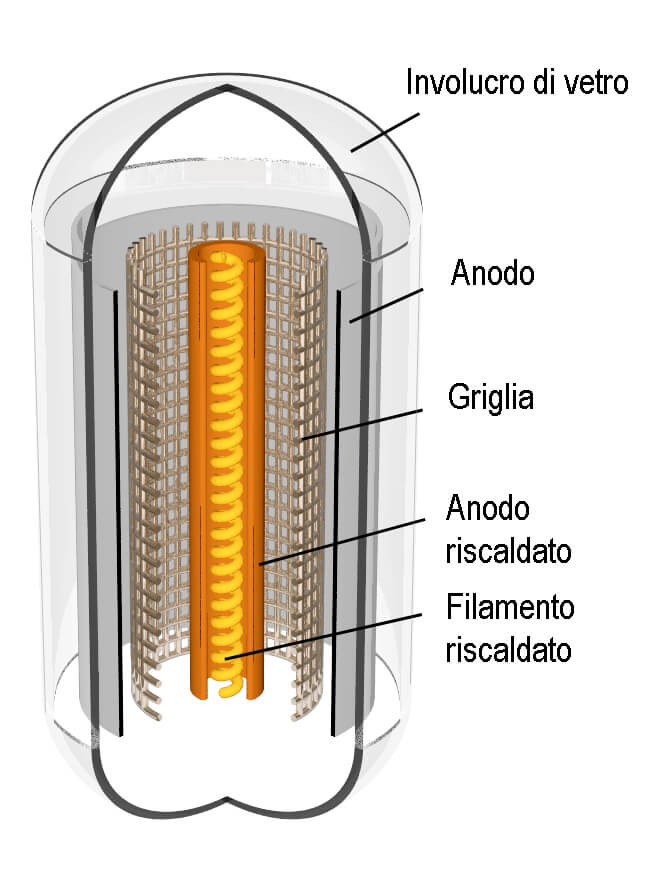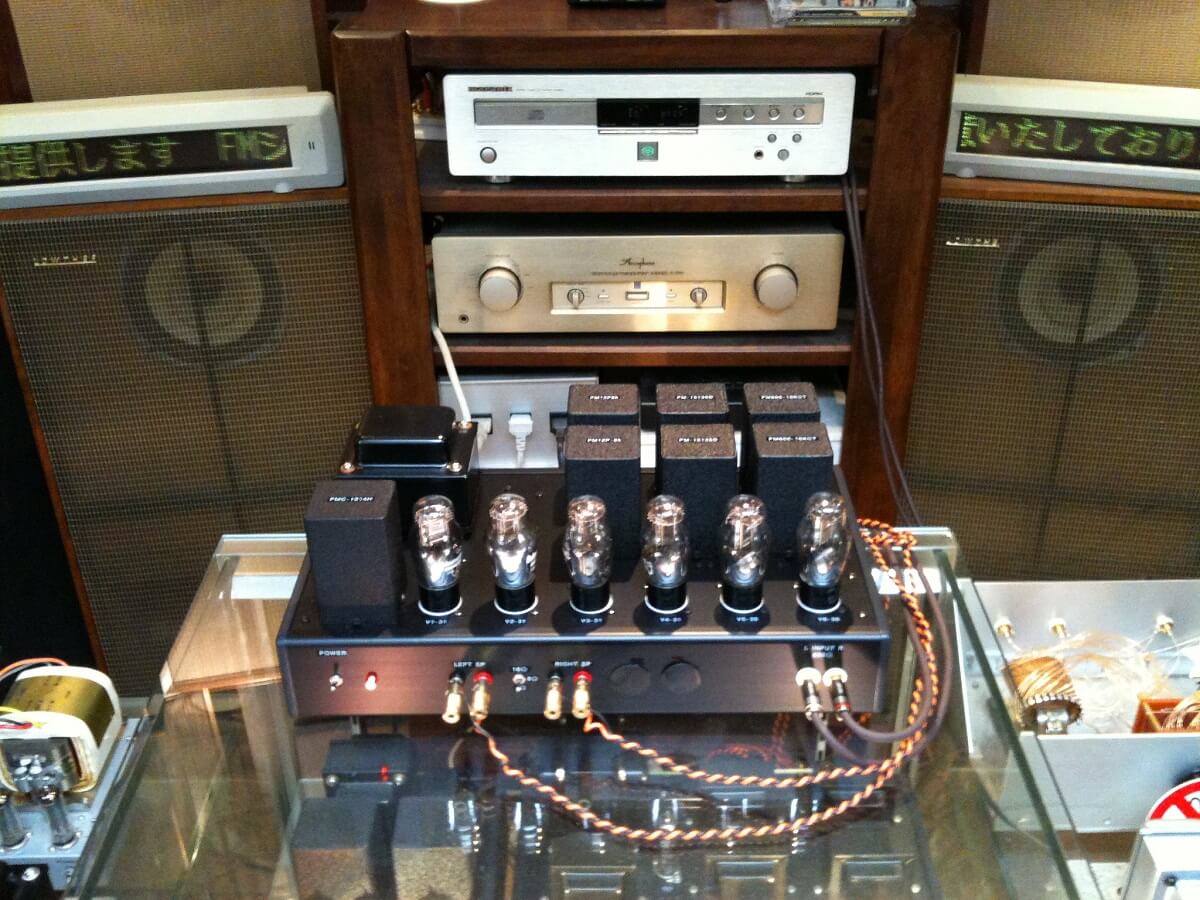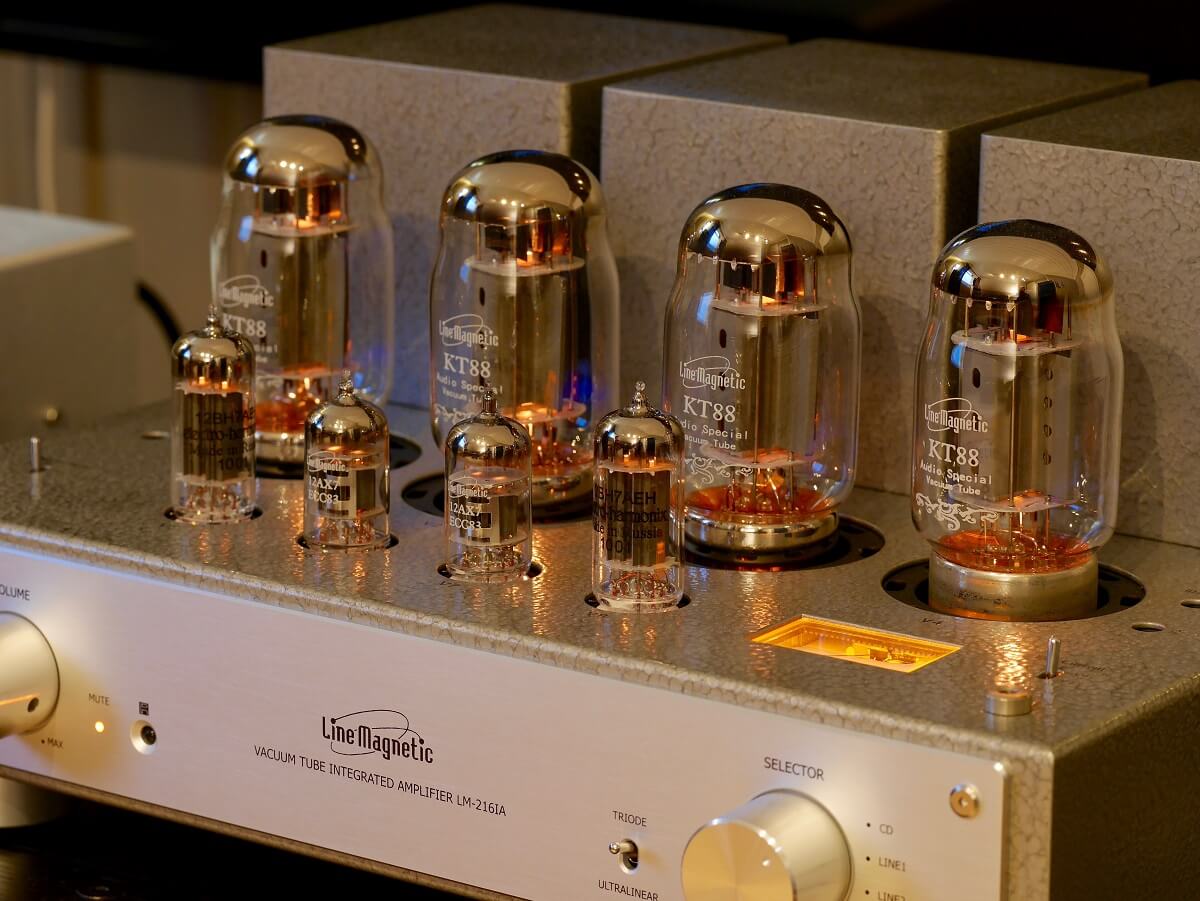- Amplifiers
- 1581 likes
- 21806 views

Valve amplifier: how does it work? What features does it have?
Wondering how a tube amplifier works is a rather common question. This type of device enjoys great popularity among enthusiasts because of its unique sound and technical features. In its own way, this type of amplifier has made music history. Proof of this is the use of the models McIntosh, even called upon to give voice to the artists who participated in the legendary Woodstock concert (for more information on the subject.
Comparison with transistor alternatives is inevitable (and even fun), and in fact in this article we will also briefly discuss the differences between these amplifiers.
First, however, let's try to point out the peculiarities of tube amplifiers, starting with how they work.
How a tube amplifier works
The operation of tube amplifiers sees the action of valves working at high voltage. By high voltage we mean hundreds of volts, certainly higher than those of transistor models.
Valves are characterized byhigh output impedance, which forces the presence of output transformers, capable of adapting to the impedance of the speakers used in their configuration.
This structure allows for more accurate reproduction of sine wave peaks. The primary consequence is the feeling that the output power is greater than with transistor alternatives of equal power.
Each valve, in turn, consists of electrodes placed in aglass ampoule under vacuum. And it is precisely the number of electrodes that makes it possible to determine the type of valves (diode, triode, pentode, and so on). Below we offer a brief diagram of the structure of a valve, accompanied by some considerations:

The operation of a valve is rather simple to explain. Heating a filament creates-through the thermionic effect-a flow of electrons, which is released from the cathode. The flow is generated the moment a voltage is applied to the anode.
Rather complex and delicate components, valves require a period of mechanical settling in before they can perform at their best. This is the famous "break-in," necessary in tube amplifiers in order to get to the typical sound of these amplifiers. Depending on the case, the break-in period can range from 50 to 100 hours.
How many years does a tube amplifier last?
The very structure of a tube amplifier poses the problem of how long the device will last. Rather than a problem, it is a matter of expedients that should be followed to increase the useful life of one's amplifier. For example:
- It is not always true that keeping a tube amp on constantly is a recommended practice. On the one hand, it prevents circuits and other components from the repeated stress of being turned on. On the other, however, the pressure of constant operation may reduce longevity. Especially since with Class A amplifiers, which are notorious for reaching high temperatures, there is little point in keeping the device on all the time.
- Generally speaking, turning on the amplifier half an hour before use should bring it to an acceptable temperature. Always considering, however, that each device is a story in itself.

While following these and other precautions, it must be said that sooner or later the life of the tubes may come to an end. In class A models, for example, longevity may be around 4 to 5 years. Of course, one always has to consider the usage of the device, time of use, volume and many other parameters. Therefore, the figure just mentioned could go as low as 1 or 2 years.
How do you turn on a tube amplifier?
Turning on an amplifier connected to a Hi-Fi audio system is not a very complicated matter. For best results, however, just follow a simple rule: the amplifier should be turned on first, and turned off after the system.
As we said earlier, it is not always necessary to turn on the amplifier long before listening, or even to keep it on all the time. As a general rule, half an hour to an hour beforehand yields very good results.
If you are amplifying digital equipment, then, you would also need to follow other guidelines. According to some, CD players and DACs should be turned on a day before listening, so as to achieve perfect thermal equilibrium. If this is not possible, it would still be advisable to rotate the volume, tone and balance controls so as to recalibrate everything as best as possible. Speaking of high-performance CD players, in a recent article we discussed the best CD and SACD players Marantz.
When the listening session ends, you follow the reverse route. First you proceed to turn off the audio components, and finally the amplifier.

How and when to change tubes
There is no hard-and-fast rule regarding the replacement of tubes. What is certain is that enthusiasts with more trained ears can recognize when the sound begins to deteriorate, and the maximum volume is not the same as before.
As we said earlier, there is no fixed period of longevity. Depending on usage, the need to change the valves may arise after six months, a year, or even much later.
To change the valves, one must first turn off the amplifier, and disconnect the power. Once you locate the valves (the final ones are the largest, so they are easy to recognize), you need to apply gentle side pressure, and in the meantime try to pull the valve out. Once this is done, the replacement can be done.
Better a tube or a transistor?
We have arrived at the question of questions, the topic that has always animated debates and discussions among enthusiasts: is it better to have a tube amplifier or a transistor one?
We can say that, meanwhile, there is a difference in technology between the two solutions. The tube structure on the one hand, the solid-state on the other. The latter operates at lower volts than the tube alternatives and registers a lower output impedance. Transistor amps are generally cheaper, smaller in size and strong in longevity.
On the other hand, sound quality is often inferior to tube amps. Distortion or other imperfections may be present, resulting in a sound that is not always crystal clear.
Here is a comparison of the strengths of these two types of amplifiers:
| Advantages tube amplifiers | Advantages transistor amplifiers |
|---|---|
| High power | They are cheaper |
| Uncompromising audio quality | High longevity |
| Ideal for professionals and demanding enthusiasts | Easily transportable |
One table alone, it is clear, is not enough to settle the question. Subjective factors, budget and a thousand other parameters intervene in the choice. If nothing else, however, we have tried to make an initial separation between these types of amplifiers.
Which tube amplifier to choose?
This brief article on how tube amplifiers work can only end with an invitation to visit our catalog of amplifiers. Within it you will find integrated, power amplifiers, preamplifiers and sinto amplifiers of the most well-known and popular brands.
Among others, we are pleased to offer you equipment from McIntosh, Cambridge Audio, Magnat, Denon, Marantz and many others. In addition, for any information, we are always available by e-mail(info@hifiprestige.it) or by cell phone(335 6672281).
Images used in the article:
"Tube Amplifier" by morganglines is licensed under CC BY-NC-SA 2.0
"Tube amplifier @ Vacuum Tube Kingdom, Akihabara Radio Department Store B1F, 6th March 2010" by streetviewer is licensed under CC BY 2.0
"File:Line Magnetic LM-216IA tube amplifier (21137141692).jpg" by Jan Hammershaug from Vestre Gausdal, Norway is licensed under CC BY 2.0